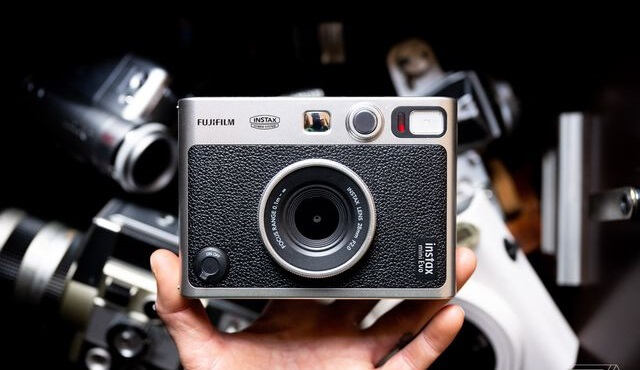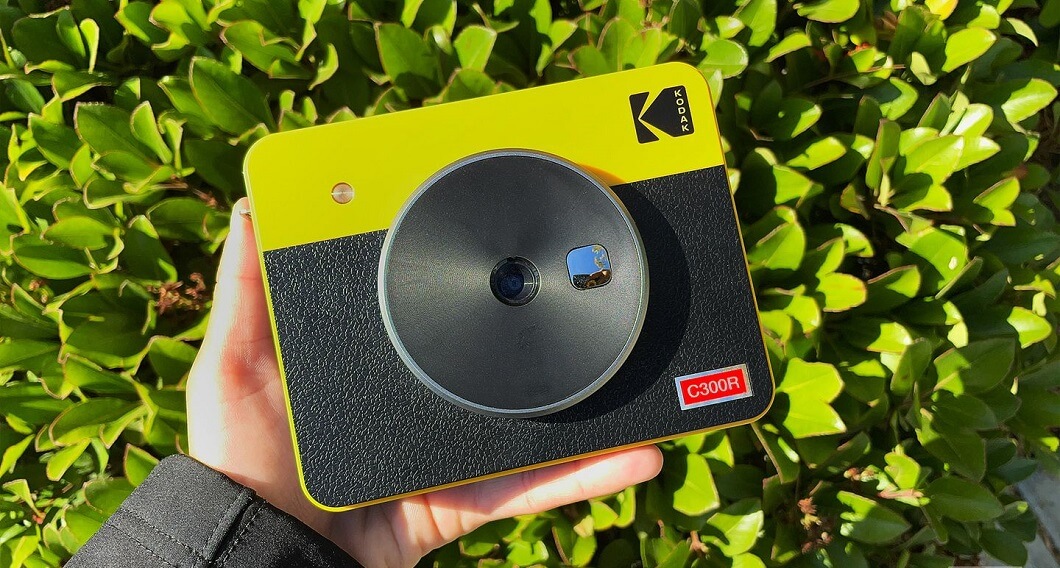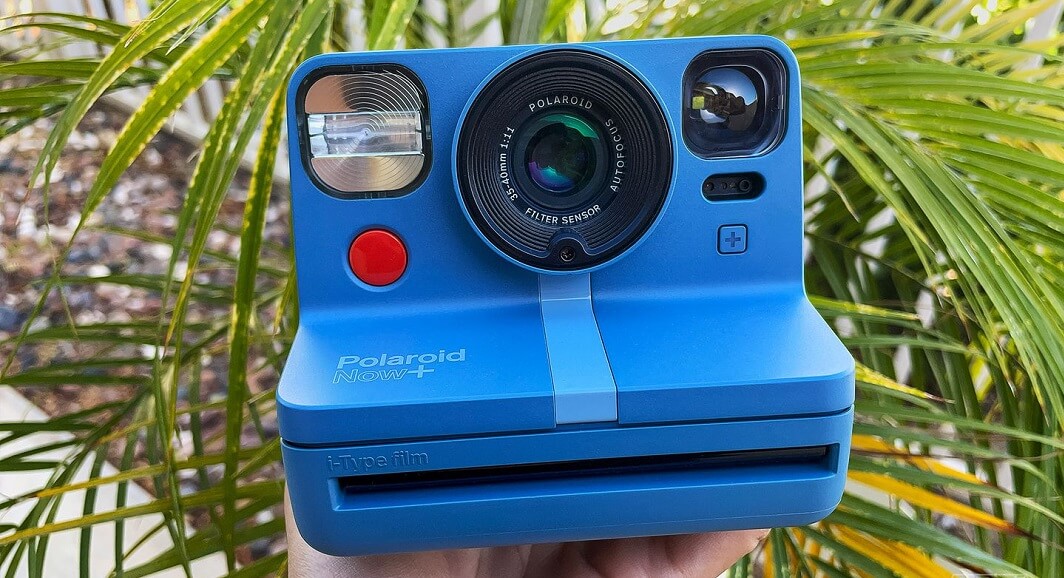Despite our smartphones’ remarkable ability to capture and instantly share high-quality photos worldwide, there remains a certain enchantment associated with classic instant cameras. With a mere press of a button, these cameras allow you to seize a moment in a tangible photograph, available for immediate viewing and touch. While the images produced by instant cameras may lack the pristine perfection of those generated by modern digital counterparts, their gentle aesthetic and occasional flaws often contribute significantly to their charm.
Nevertheless, it’s important to note that not all instant cameras are created equal, and some are better suited to various requirements and budgets. This is why we conducted evaluations on some of the most popular instant cameras available on the market, hailing from well-known brands such as Fujifilm, Polaroid, and Kodak.
In our comprehensive guide to the finest instant cameras showcased here, each model promises an enjoyable photography experience. However, they come with varying features and price tags, making some better suited for children or novice photographers, while others offer advanced capabilities and increased creative control (for a higher cost). Ultimately, our criteria for assessing a top-notch instant camera revolve around print quality, user-friendliness, and affordability. This is precisely why we’ve chosen Fujifilm’s Instax Mini 12 as the ultimate choice for most individuals, as it excels in all three of these essential aspects.
The Best Instant Cameras

Fujifilm Instax Mini 12
The Fujifilm Instax Mini 12 is a great instant camera for most folks. Even though it doesn’t have fancy extras, this easy-to-use camera takes nice pictures fast. It even has a special mode for taking selfies. You can buy it in many fun colors that kids and tweens will really like.
Film type: Fujifilm Instax Mini film (sold separately)
Film size: 2 x 3-inches
Weight: 306 grams
Charging method: AA batteries
Companion app: None
Other features: Built-in selfie mirror, film counter
If you only want to press a button and get a good photo without spending too much money, we suggest the Fujifilm Instax Mini 12. It’s a simple instant camera, kind of like the Instax Mini 11 we recommended before, but with a few small improvements. It still takes less than five minutes to get ready to take pictures, but it’s easier to set up because you just need to turn the lens to “on” or “off.” This camera is easy to use, and it’s slimmer, so it’s great for kids and people who are new to photography.

Fujifilm Instax Mini Evo
The Fujifilm Instax Mini Evo is a high-end instant camera that stands out for its style. It lets you pick which pictures to print, and it also delivers good-quality images.
Film type: Fujifilm Instax Mini film (sold separately)
Film size: 2 x 3-inches
Weight: 285 grams
Charging method: Micro USB
Companion app: Yes
Other features: LCD screen, smartphone printing
One of Fujifilm’s latest instant cameras, the Instax Mini Evo, is both my colleague Becca Farcase’s and my personal favorite. It’s a hybrid camera that resembles Fujifilm’s pricier Fujifilm X100 series, with a sleek appearance and vintage-style dials and buttons that caught the attention of people in Los Angeles while I was out taking photos.
Though its $199 price may seem high at first, this camera offers a level of flexibility that can save you money over time if you use it frequently. The Instax Mini Evo features a vibrant three-inch LCD screen that allows you to preview and choose which pictures to print, preventing you from wasting film on unwanted shots. This extra flexibility also gave me more room for creative exploration, as I didn’t have to worry about running out of film. Additionally, I enjoyed using the Instax Mini Evo app to print photos from my smartphone. Unlike the Instax Mini 12, the Evo uses a Micro USB port for charging, so you won’t have to keep buying new batteries.
Unlike Fujifilm’s Instax Mini 12, the Mini Evo has some additional features that can improve your photo-taking experience. For instance, you have the option to disable the flash on the Mini Evo and utilize the three-inch LCD screen as a viewfinder. You can also adjust the brightness settings in the menu to control how your photos will appear when they’re printed, which can be quite useful since both the Evo and the Mini 12 may struggle in low-light conditions.

Kodak Mini Shot 3 Retro
Kodak’s Mini Shot 3 Retro hybrid instant camera is accompanied by an enjoyable companion app that allows you to include frames, stickers, filters, and even hide imperfections in your photos. If you’re okay with its somewhat mediocre image quality, this is a great digital instant camera to have at parties.
Film type: Kodak Instant Print 3 x 3-inch cartridge (included)
Film size: 3 x 3-inch square prints
Weight: 467 grams
Charging method: Micro USB
Companion app: Yes
Other features: LCD screen, smartphone printing
While the Instax Mini Evo’s companion app focuses more on functionality, Kodak’s hybrid Mini Shot 3 Retro is all about having fun. The camera’s mobile app lets you add frames, stickers, filters, and a wide range of customization choices to your photos, which is perfect for creating scrapbooks. Additionally, the app includes a beauty feature to hide blemishes and a set of Snapchat-like filters that allow you to add playful elements like dog ears. This makes the Mini Shot 3 Retro a fun instant camera to use as a mini photo booth at parties.
Similar to the Instax Mini Evo, Kodak’s Mini Shot 3 Retro features a small LCD screen that lets you decide whether to print a photo or not. It also has Bluetooth support, allowing you to use the Kodak Photo Printer app for sharing photos on social media or printing reasonably sharp pictures from your smartphone. However, unlike the Mini Evo, Kodak’s Mini Shot 3 Retro is priced at approximately $150 and includes a film pack. Additionally, it uses less expensive film; currently, you can purchase a 60-sheet cartridge for about $17.99, which works out to roughly $0.33 per photo. The lower cost of film may encourage more playful and creative experimentation, even though the larger 3 x 3-inch square prints may feel somewhat lower in quality and less sturdy compared to Fujifilm’s and Polaroid’s offerings.

Polaroid Now Plus
If you’re a fan of retro aesthetics, the Polaroid Now Plus is an excellent instant camera that produces vintage-style photos. It also provides a range of creative modes, making it a reliable option for those interested in artistic photography too.
Film type: Polaroid i-Type Color Film (sold separately)
Film size: 4.2 x 3.5-inch prints
Weight: 451.5 grams
Charging method: Micro USB
Companion app: Yes
Other features: Lens filter kit, film counter
If you’re in search of an instant camera that provides the most authentic, old-fashioned instant-film experience, the Polaroid Now Plus should be your top choice. Compared to the other instant cameras mentioned in this list, the Polaroid Now Plus closely resembles vintage instant cameras like the Polaroid 600, thanks to its classic and retro-inspired design. It also features square I-Type film prints and the iconic Polaroid-style frame, which gives your photos a genuinely vintage appearance.
However, alongside its vintage charm, the Polaroid Now Plus offers the convenience and practicality of more modern features. For instance, it can be recharged using the included Micro USB charging cable. Additionally, it comes with Bluetooth support and a companion app that boasts various creative modes for greater control over your photography. These modes include a remote shutter, a self-timer, and a “Polaroid Lab” where you can adjust exposure and various color settings. The app also offers several shooting modes, including manual control and one for capturing multiple exposures. Moreover, the camera includes five colored lenses that you can attach to the front, adding a fun and artistic element to your photography.

Polaroid Go
The Polaroid Go holds the title of being the tiniest and most budget-friendly Polaroid instant camera available today.
Film type: Polaroid i-Type Color Film (sold separately)
Film size: 2.6 x 2.1-inch prints
Weight: 242 grams
Charging method: Micro USB
Companion app: Yes
Other features: Selfie mirror, film counter
In contrast to the bulky size of the Polaroid Now Plus, the Polaroid Go is incredibly compact. When I first held it, I couldn’t help but find it incredibly cute. It easily fits into the palm of my hand, which is noteworthy considering I’m petite and a little over five feet tall. In fact, it’s so small that there were moments when I forgot I had it in my purse, making it the most portable instant camera on our list. Moreover, it produces the tiniest prints among all the instant cameras I tested, which could be a plus if you’re looking to save space and prefer something smaller than Instax Mini prints.
With a weight of just over a pound, the Polaroid Go is also the lightest instant camera I’ve ever held, and it’s easy to operate with one hand. This convenience is notable because I sometimes had difficulty taking pictures with the heavier Polaroid Now Plus and, to a lesser extent, some of the other instant cameras I tested. In fact, if the photos it produced appeared more true-to-life and didn’t require a 15-minute wait in the dark for development, I might be inclined to call it the ideal instant camera for travel or for younger children.
The Polaroid Go is also one of the most budget-friendly options among Polaroid cameras available today. Its film is priced just slightly higher than Fujifilm’s Instax Mini shots, costing approximately $19.99 for a 16-sheet double pack. Fortunately, this affordability doesn’t compromise the quality of the images. Although the Go faces some challenges when it comes to capturing photos in low-light conditions, it doesn’t struggle to the same extent as the Polaroid Now Plus. Surprisingly, it was relatively easier to take clearer indoor photos with the Go, reducing the amount of wasted film. While contrast and color saturation levels remain somewhat subdued, they contribute to the vintage and almost dreamy appearance that the photos printed by the Now Plus exhibit.